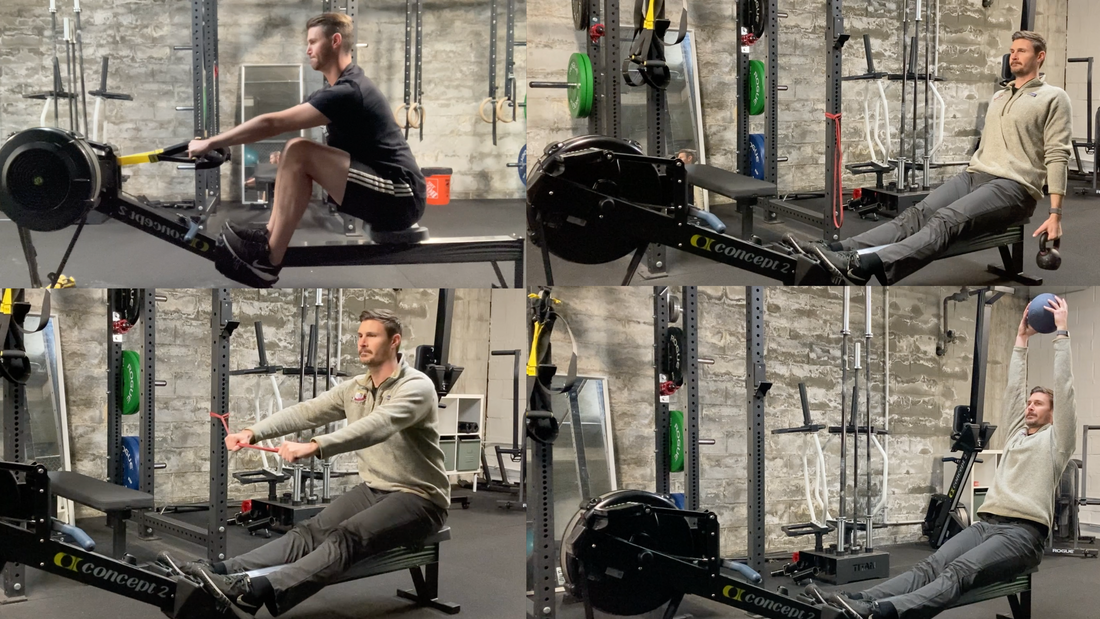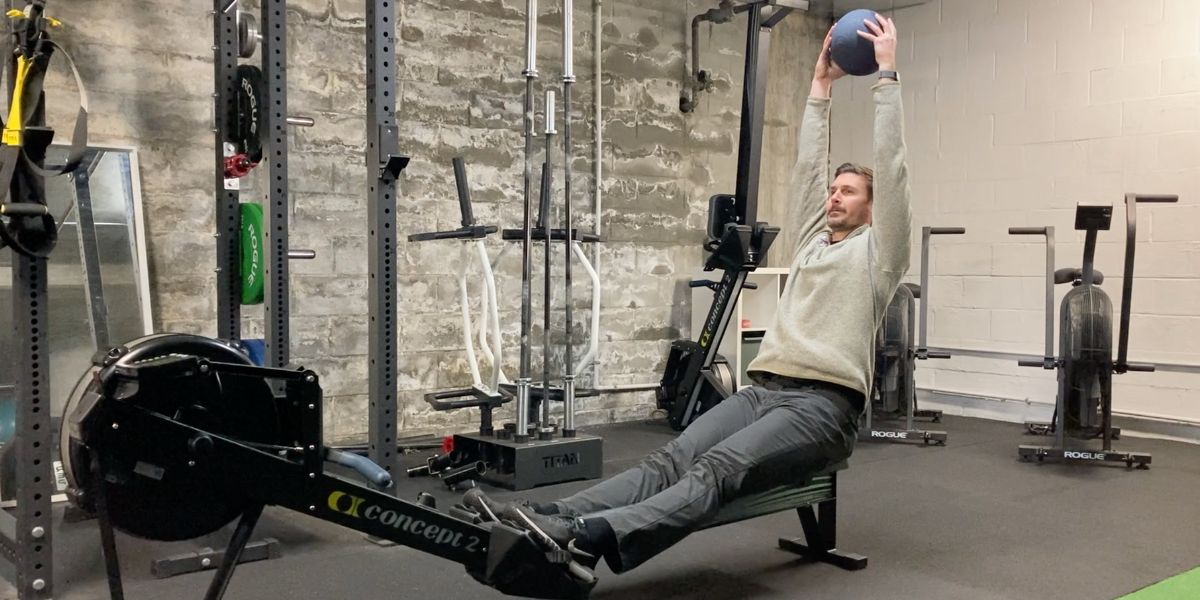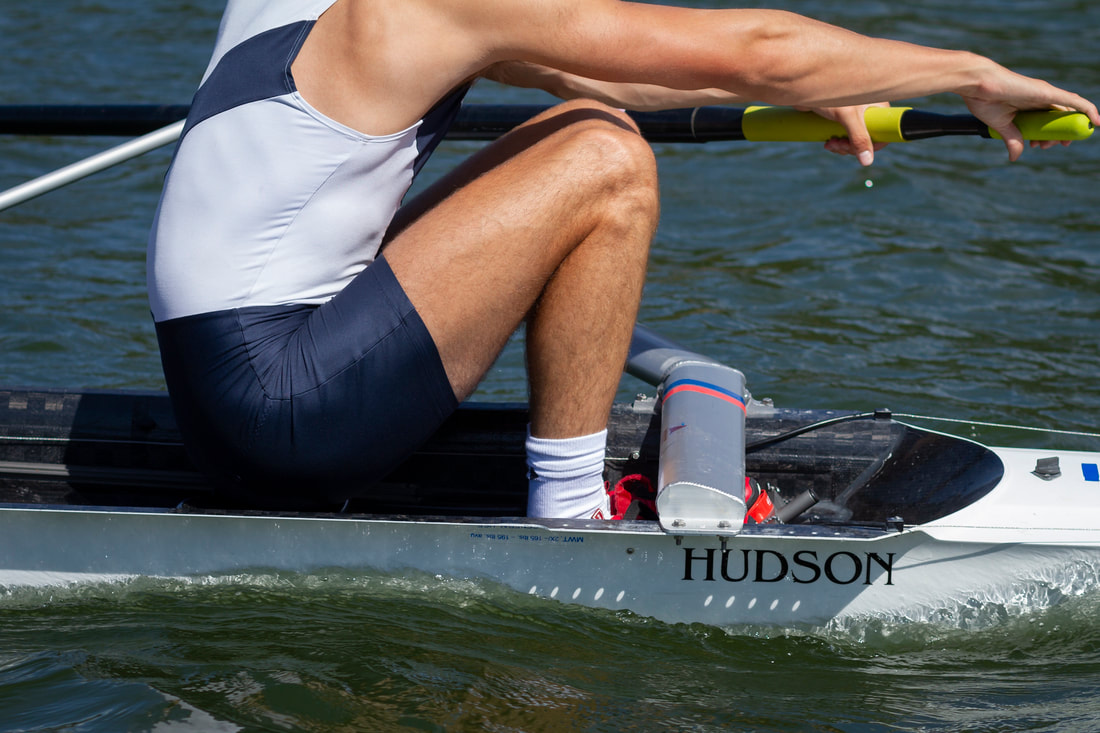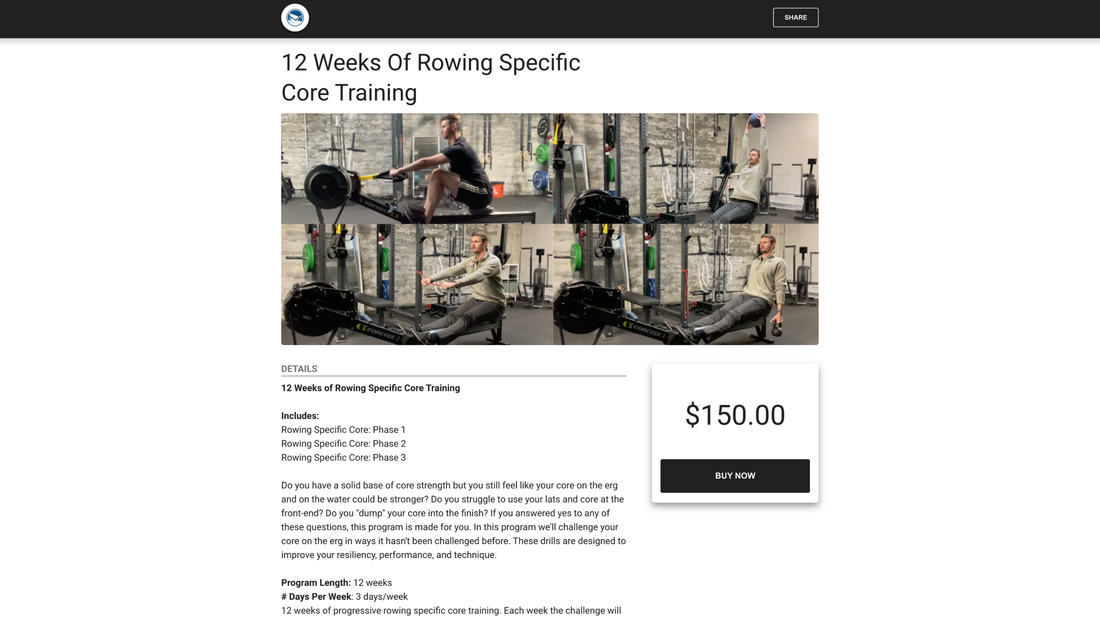"I often see rowers who have big strong legs and a core that can't keep up". What is the core?The best definition of the core that I've ever heard was from one of my mentors, Steve DiLustro. He said, "Imagine Mr. Potato Head. Remove the arms and the legs. That's your core". I love this definition because it removes all the anatomical terms and simplifies the two main roles of the core: to support and protect the spine and to allow movement at the extremities. Why is a strong core important?A strong core is necessary for two reasons: safety, and performance. A strong core protects our spine in various positions, under different loads, and at different speeds. It also provides an anchoring point to allow our extremities to apply force. Without a strong core we can't safely transfer force between the footplate and the oar handle. Which means slower boats and more injuries. What are the demands of the sport?Rowing demands a lot from our core. It functions as a breaking system at the finish, it's needed for suspension at the catch, and it supports the spine as it rounds, side bends, rotates, and extends with every stroke. I often see rowers who have big strong legs and a core that can't keep up. Unfortunately this creates a situation where you can visually see the legs overpowering the core (the spine bends and shoulders pull forward as they pick up load at the catch). Overtime this core weakness creates a lot of undue stress on the spine, shoulders, ribs, and neck. This weakness also creates an energy leak reducing our boat speed and splits. The good news is that it's possible to build a core that supports and protects our spine as well as improves our technique and energy transfer. Is floor based core training enough?I still include floor based core training for myself and all of my clients, and it's certainly part of the equation, but once we're ready we need to have progressions that challenge and prepare us for the specific demands of rowing. Here's an example of how you might begin to strengthen your core using floor based core training. Bridge variations (strengthens the backside: supports the drive) Dying Bug variations (strengthens the frontside: supports the finish) Side Plank Variations (strengthens the side: supports the lean into the rigger and boat motion) Birddog Variations (strengthens rotation: supports rotation) Spend 20-60sec working on each variation for a minimum of 3 times a week. Check out the videos below for my 4 favorite floor based core drills. Did you forget strength training?Some people argue that strength training is the only core work needed. While I agree that a well planned strength plan can help to build a strong core and body, I still believe that floor based core work, strength training, and rowing specific core work are all necessary. That's why the training plans that I write for my clients include everything: mobility, plyometrics, heavy implement power, strength, core, and rowing specific core drills. Here are a few notable strength movements that can help you develop an even stronger core. Deadlift Variations SLDL Variations Front Squat Variations Split Squat Variations Row Variations Push-up Variations Chin-up/Pull-down Variations Overhead Pressing Variations Carries Checkout the videos below for my favorites. How can I take it to the next level?Floor based core work and strength training helps us build a very solid core, but if we want to take it to the next level we need to get more specific. I use the suspension drill and what I call erg planks with all of my rowers. What I love about both of them is that they both double as technical drills and rowing specific core drills. The suspension drill teaches rowers how to pick up load without overloading their ribs, shoulders, neck, and back. It also strengthens the rowers' ability to suspend, connect, and accelerate off of the front end. I love to use this drill to re-educate rowers who have been experiencing back pain caused by rowing. Erg planks teach rowers how to swing in and out of the finish without overusing the back. They also strengthen the rowers' ability to maintain foot pressure into the finish. Once you try these you'll also notice they help to improve posture and they seriously challenge your core. The Seated Rockback: Progressions, Variations, Common Faults, Fixes, and Cues1-2 Years ago, Rowing Strength Coach, Will Ruth had originally written about the seated rockback in a Science of Rowing issue. He learned about the seated rockback from rowing physical therapists, Dr. Fiona Wilson and Kellie Wilkie. At that time I had been using erg planks but not to the extent that I use them today. Inspired by Will's article I took Will's seated rock back and developed a full progression on the erg. Will reached out to put together a collaborative video introducing and delivering great detail on a lot of the progressions, variations, common faults, fixes, and cues to get you started and to keep you busy for months. Check out the 13 min video below. 12 Weeks of Rowing Specific Core TrainingIf you're interested in a plan to progressively build up your rowing specific core over the next 3 months, I designed a 12 week erg plank program for you. For more details and to purchase the program click the image below. Cheers to a stronger core!
0 Comments
Leave a Reply. |
Author
Blake Gourley holds a Masters of Science in Sports Performance Training and has over 12+ years of experience working with rowers. Read more Categories
All
Archives
August 2023
|





 RSS Feed
RSS Feed